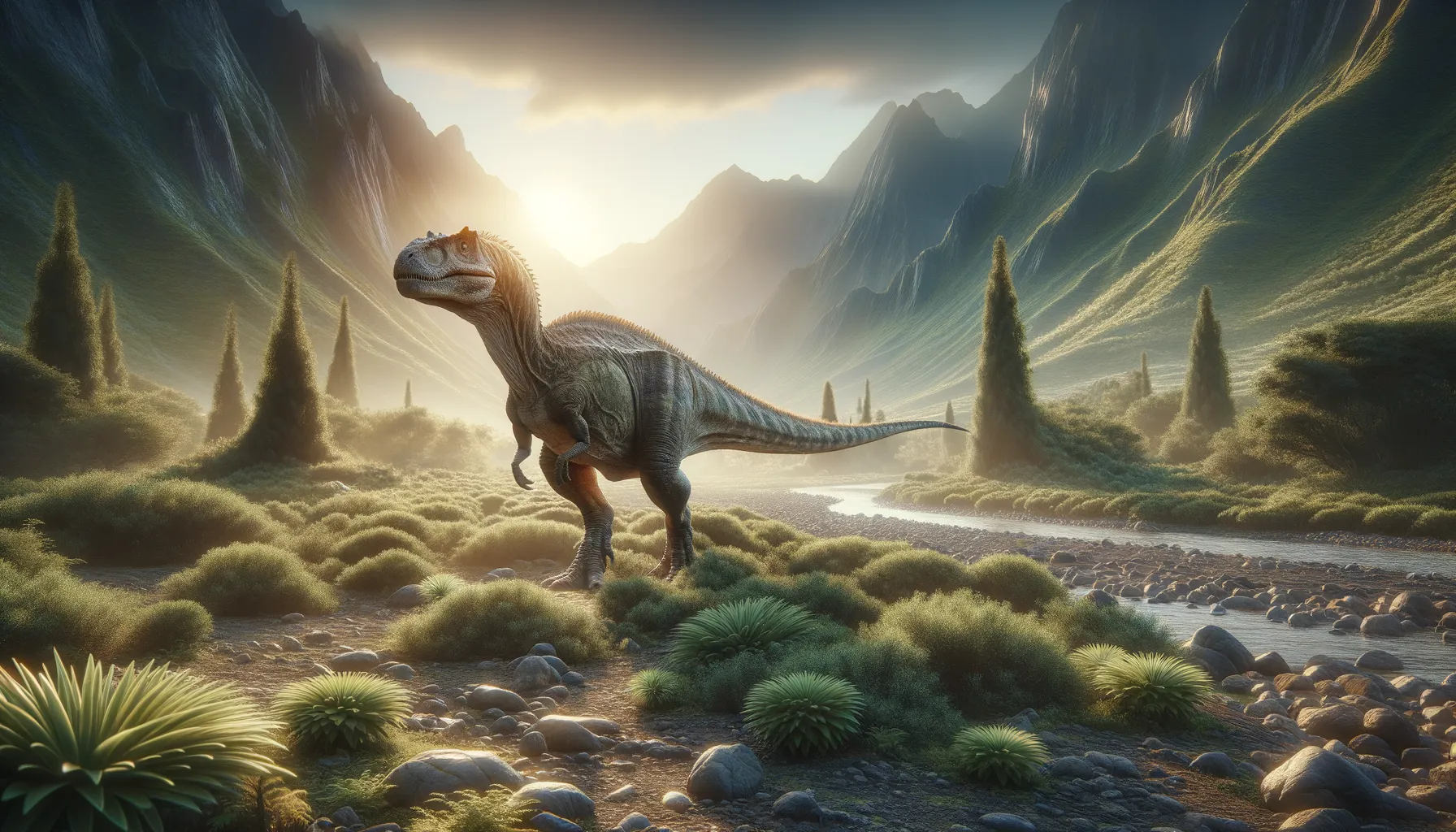
Xiaosaurus
Tiny herbivore with a big impact.
Period
Jurassic
Length
About 1.5 meters (5 feet) long.
Height
Around 0.6 meters (2 feet) tall.
Weight
Approximately 40 kilograms (88 pounds).
Xiaosaurus was a small, herbivorous dinosaur that roamed the Earth during the Middle Jurassic period. It belonged to the Ornithopoda group and likely lived in what is now China. With a modest size, Xiaosaurus was adapted to grazing on low-lying vegetation. Notably, this dinosaur provides valuable insights into the evolutionary paths of early ornithopods and their ecological roles. Its fossils have mainly been found in China's southwestern regions, illustrating a diverse and rich paleontological context.
Diet
Xiaosaurus was primarily herbivorous, feeding on various plants. Its diet likely included ferns, cycads, and other low-lying vegetation, utilizing its beak-like mouth to nip at foliage.
Hunting
Being a herbivore, Xiaosaurus did not hunt in the traditional sense. Rather, it foraged for food, navigating the undergrowth to find plants suitable for consumption.
Environmental challenges
Xiaosaurus faced environments with fluctuating climates, where food availability could vary. To ensure survival, it needed to adapt to changes in vegetation and predator threats. Habitat fragmentation might have posed challenges, requiring travel between feeding grounds. Moreover, living in a time of evolving dinosaur groups meant competing for resources within a dynamic ecosystem.
Speed
Moderate speed, allowing agile movements.
Lifespan
Lifespan estimates are uncertain.
First discovery
Discovered in the Dashanpu Formation, China, in the 1980s.
Fun Facts
- Xiaosaurus was a small dinosaur, estimated to be just about 3 to 4 feet long, making it a similar size to a large dog.
- It lived during the Middle Jurassic period, about 165 million years ago, roaming what is now the Sichuan Province in China.
- The name Xiaosaurus means 'small lizard,' reflecting its petite stature.
- Xiaosaurus is believed to have been a herbivore, likely feeding on the lush vegetation of its time.
- Its fossils were first discovered in the late 1970s, but its small bones make it a rare find in the fossil record.
- This dinosaur walked on two legs, similar to many other small, plant-eating dinosaurs of its era.
- Xiaosaurus shared its environment with other intriguing dinosaurs, like the large sauropods and early carnivorous theropods.
Growth and Development
Xiaosaurus likely experienced stages of rapid growth in its early life to reach a size suitable for survival. Like many dinosaurs, it may have gone through distinct phases of development marked by diet changes. Bone studies suggest periods of growth spurts influenced by environmental conditions. Juveniles were possibly more vulnerable to predators and environmental shifts, requiring adaptive growth strategies.
Habitat
Xiaosaurus lived in regions rich with lush vegetation, conducive to its plant-based diet. Its habitat likely comprised forested areas and open plains for foraging. The landscape would have included diverse flora, supporting a range of herbivorous dinosaurs. Seasonal variations influenced its habitat, altering food availability and shelter conditions.
Interaction with other species
Xiaosaurus likely coexisted with a range of other herbivorous and carnivorous dinosaurs. Its interaction was primarily non-threatening, avoiding larger predators. Competing for plant resources with other herbivores could occur, dictating its movements and behaviors. Social interactions were minimal, focusing more on environmental adaptation and survival.
Natural lifespan
Xiaosaurus's natural lifespan remains speculative due to limited fossil evidence.
Reproduction
Xiaosaurus reproduced by laying eggs, like most dinosaurs. Nesting sites would be chosen for safety and proximity to food resources. The reproduction cycle likely included communal nesting behaviors to increase offspring survival. Hatchlings were vulnerable, relying on parental protection and environmental cover.
Social behaviour
Xiaosaurus may have exhibited some social behavior, especially in foraging groups. These groups would offer protection and increase foraging efficiency. Its behavior was likely influenced by resource availability and predator presence. Over time, its social structure could adapt based on environmental pressures.
Fossil locations
Xiaosaurus fossils have been primarily found in the Sichuan province of China. These discoveries helped piece together the Middle Jurassic ecosystems of the region. The Dashanpu Formation is particularly noted for its diverse dinosaur assemblages. Ongoing investigations continue to reveal more about its habitat and interactions.
